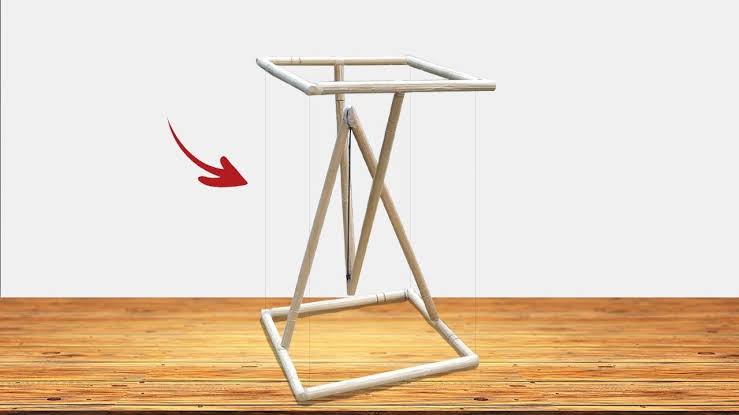Physical Address
304 North Cardinal St.
Dorchester Center, MA 02124
Physical Address
304 North Cardinal St.
Dorchester Center, MA 02124

In the world of furniture design, where form meets function, one marvel stands out as a testament to ingenuity – the Tensegrity Table. This seemingly impossible creation challenges traditional design principles and defies gravity, offering a breathtaking blend of artistry and engineering. Let’s delve into the intricate construction of Tensegrity Tables, exploring the magic that brings these unique pieces to life.
Tensegrity Basics
Tensegrity: Tensional Integrity
The term “Tensegrity” is a portmanteau of “tensional integrity,” capturing the essence of this design philosophy. Tensegrity structures rely on the balance between compression elements and tensional elements to create a stable and visually captivating form. The interplay between pushing and pulling forces is what gives Tensegrity Tables their distinctive appearance.
Origins in Architecture and Art
Tensegrity principles have roots in the architectural designs of Buckminster Fuller and the artistic visions of Kenneth Snelson. The fusion of art and engineering has paved the way for Tensegrity Tables, where practicality and aesthetics intertwine in a delicate dance.
The Anatomy of Tensegrity Tables
Structural Components
At first glance, a Tensegrity Table might appear to defy the laws of physics, with its floating tabletop suspended in mid-air. However, a closer inspection reveals a meticulous arrangement of components. Tensegrity Tables typically consist of rigid compression elements, often in the form of wooden or metal struts, and tensional elements, commonly steel cables or wires.
The Floating Illusion
The magic of Tensegrity Tables lies in their ability to create the illusion of levitation. The tensional elements, strategically tensioned and arranged, counterbalance the weight of the tabletop, creating a delicate equilibrium. This optical illusion not only defies expectations but also adds an ethereal quality to the table’s overall design.
Crafting Tensegrity Tables: Challenges and Solutions
Precision in Design
The construction of Tensegrity Tables demands precision in design and execution. Each component must be carefully measured and crafted to ensure the delicate balance required for the structure to remain stable. Advanced computer-aided design (CAD) software often plays a crucial role in modelingand simulating the tensional and compressive forces at play.
Material Selection
The choice of materials is critical in Tensegrity Table construction. The compression elements need to be sturdy enough to support the tabletop’s weight, while the tensional elements must possess the strength to withstand the forces exerted. Wood, metal, and high-tensile-strength cables are common choices, each contributing to the overall aesthetics and structural integrity of the table.
Assembly Mastery
Assembling a Tensegrity Table requires a steady hand and an understanding of the intricate forces at play. Tensioning the cables to achieve the desired equilibrium is a delicate process, often requiring adjustments to achieve the perfect balance. Skilled craftsmanship and attention to detail are paramount in ensuring the success of the assembly.
The Artistry of Tensegrity Tables
Sculptural Elegance
Beyond their structural complexity, Tensegrity Tables are celebrated for their sculptural elegance. The interplay of geometric shapes, combined with the illusion of levitation, transforms these tables into functional works of art. Designers often explore various forms and configurations, pushing the boundaries of creativity within the constraints of tensegrity principles.
Customization and Personalization
Tensegrity Tables offer a unique canvas for personal expression. From minimalist designs to more elaborate and artistic creations, these tables can be customized to fit various interior aesthetics. The marriage of engineering prowess and artistic vision allows for a wide range of possibilities, making each Tensegrity Table a one-of-a-kind masterpiece.
Conclusion
Designing the impossible is a pursuit that fuels innovation and challenges the status quo. Tensegrity Tables exemplify this ethos, pushing the boundaries of furniture design through a harmonious blend of tensional integrity and sculptural elegance. As these marvels find their place in contemporary interiors, they not only serve as functional pieces but also stand as testaments to the limitless possibilities when artistry and engineering converge. The intricate construction of Tensegrity Tables invites us to rethink what is possible, reminding us that in the realm of design, the extraordinary is achievable.